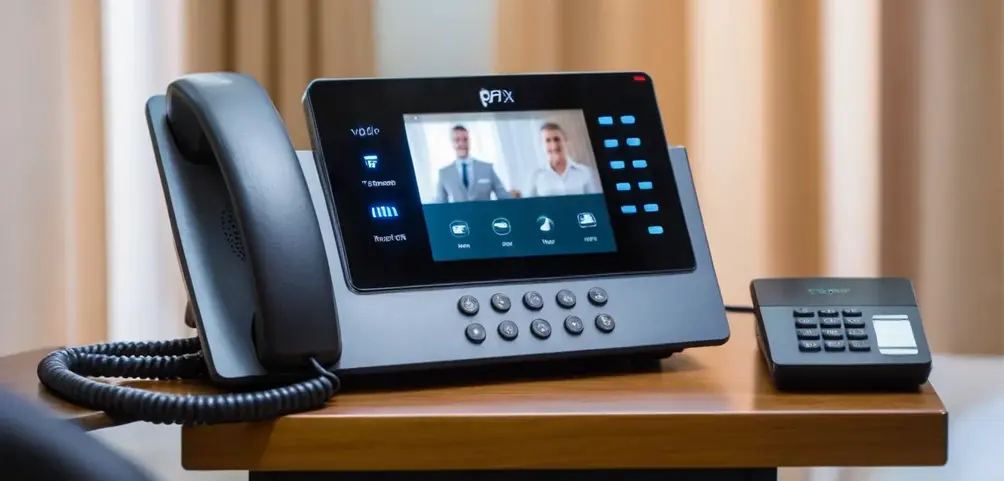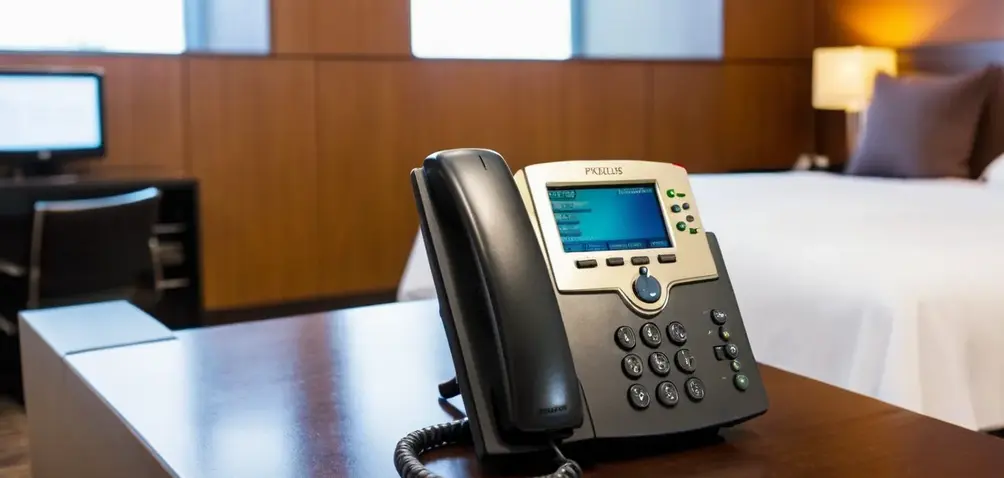Choosing the Right Communication System for Your Hotel
As a hotel owner or manager, keeping guests connected and ensuring seamless service is paramount. With constantly evolving technology and rising guest expectations, evaluating your phone and communication systems is more important than ever. But with so many options on the market today, how do you choose the best solution for your specific property?
In this article, we will break down the key differences between Session Initiation Protocol (SIP) trunking, Voice over Internet Protocol (VoIP), and on-premise Private Branch Exchange (PBX) phone systems. By understanding the pros and cons of each technology, you’ll be empowered to select the solution that perfectly aligns with your property’s needs and budget.
Let’s start with a brief overview of each:
SIP Trunking
SIP trunking allows a hotel to utilize an internet connection to make and receive phone calls, rather than relying on traditional phone lines. Calls are transmitted digitally using the SIP standard, bypassing costly local telephone companies and public phone networks. Businesses connect their PBX to the internet through a SIP provider. Benefits include significant cost savings, flexibility, scalability and mobility features.
VoIP
VoIP stands for Voice over Internet Protocol – it’s a method of using an internet connection rather than a traditional phone line network to place calls. Many VoIP solutions operate through SIP trunks. Key differences from trunking are that VoIP systems may be fully cloud-based rather than requiring an on-site PBX, and often include additional unified communications features.
PBX
A Private Branch Exchange (PBX) is an in-house phone system that connects users within a hotel, as well as allowing outside phone calls. Traditional PBX systems used analog phone lines for connectivity, but modern ones can integrate with SIP trunking or cloud-based VoIP solutions. An on-premise PBX offers more control but requires upfront hardware costs and on-site management.
SIP Trunking vs Traditional Phone Lines

Some key limitations of analog phone lines include:
- Costly monthly per-line fees, even when lines aren’t actively in use
- Expensive long distance and international calling rates
- No ability to scale lines up or down as business needs change
- Limited mobility features – calls can only be received at the physical location
SIP trunking provides a far more affordable and flexible alternative. Some significant benefits over analog phone lines include:
- No fixed monthly per-line fees – hotels only pay for the SIP channels actively in use
- Unlimited local and long distance calling included at a flat rate
- Lower total cost of ownership thanks to usage-based billing
- Turn up additional SIP channels within minutes as business grows
- Mobility features allow staff to receive calls anywhere via softphone apps
- Superior call quality via digital Voice over IP technology
By transitioning to SIP trunking, hotel owners can eliminate outdated phone line charges, lower telecom costs substantially and gain more flexibility. When evaluating communication system upgrades, SIP trunking should absolutely be considered before sticking with traditional PSTN lines.
VoIP vs On-Premise PBX
Most modern hotels are choosing either a cloud-based VoIP system or an on-premise PBX solution. Both can integrate with SIP trunks, but each has distinct operational factors to consider:
| VoIP Pros | VoIP Cons | On-Premise PBX Pros | On-Premise PBX Cons | |
|---|---|---|---|---|
| Fully managed cloud solution | ✔️ No hardware to purchase or maintain on-site | ❌ Dependence on high-speed internet connectivity for basic operations | ✔️ Greater control and customization of features, configurations, and integrations | ❌ High upfront hardware/infrastructure costs for equipment purchase |
| Predictable monthly subscription costs | ✔️ Predictable monthly subscription costs regardless of usage levels | ❌ Limited customization options compared to on-premise solutions | ✔️ Potential long-term cost savings versus cloud subscription model | ❌ Requires on-site IT staff for installation, configuration, and ongoing support |
| Seamless call continuity | ✔️ Seamless call continuity via built-in redundancy and disaster recovery | ❌ Vendor lock-in – difficult to change providers without disruptions | ✔️ No reliance on the internet for basic call functionality | ❌ Responsibility for maintaining hardware and software updates yourself |
| Robust unified communications features | ✔️ Robust unified communications features like video/audio conferencing | ✔️ Flexibility to leverage existing hardware investments over time | ❌ Less flexible than cloud-based scalability for additional features/locations | |
| Flexible scalability | ✔️ Easily add/remove features and rooms as needs change | |||
| Simple remote configuration and software updates | ✔️ Simple remote configuration and software updates via web portal |
The right choice depends heavily on each hotel’s IT capabilities, connectivity, support model preferences and technology roadmap. For many modern properties, the simplicity and subscription costs of VoIP are easier to adopt versus managing an on-site PBX system. But larger legacy hotels may get more value from a premise solution. Carefully weighing these factors will lead to an optimal decision.
Finding the Right Communication Partners
When implementing any new communication technology, it’s critical to choose reputable partners that truly understand the hotel industry. After all, your partners will play a major role in the success of your new system roll out and ongoing support experience.
An expert provider like Jet Hotel Solutions specializes exclusively in hospitality telecom solutions. They offer comprehensive assessment, vendor selection, project management and long-term support services. Their hospitality-focused methodology ensures seamless technology transitions with minimal disruption.
 Another benefit is that JET maintains preferred relationships with top-tier communication providers. Through their established connections, hotels gain specially negotiated pricing and service level agreements tailored for the unique demands of the lodging sector.
Another benefit is that JET maintains preferred relationships with top-tier communication providers. Through their established connections, hotels gain specially negotiated pricing and service level agreements tailored for the unique demands of the lodging sector.
Partnering with experienced industry experts takes the guesswork out of the complex process. Their consultative approach delivers precisely the right mix of features and support to maximize ROI while enhancing the guest experience.
In Summary
Selecting the optimal communication system can seem daunting with constantly emerging options. But by breaking down key factors like infrastructure requirements, total cost of ownership, support needs and scalability planning, the best choice becomes clear.
Leveraging the deep skills of specialists like JET Hotel Solutions streamlines vendor selection and implementation to minimize disruptions. Their proven project methodology and preferred provider partnerships deliver seamless technology upgrades that boost service levels and maximize long-term ROI.
Based in Florida with nationwide resources, JET is uniquely qualified to advise hotels on the ideal path for upgrading phone, internet and collaboration tools. To learn more about their tailored approach, please contact them at www.JETHotelSolutions.com or call (772) 444-8500 today. Your guests and staff will thank you for modernizing communications with a strategic partner focused entirely on the lodging industry.
